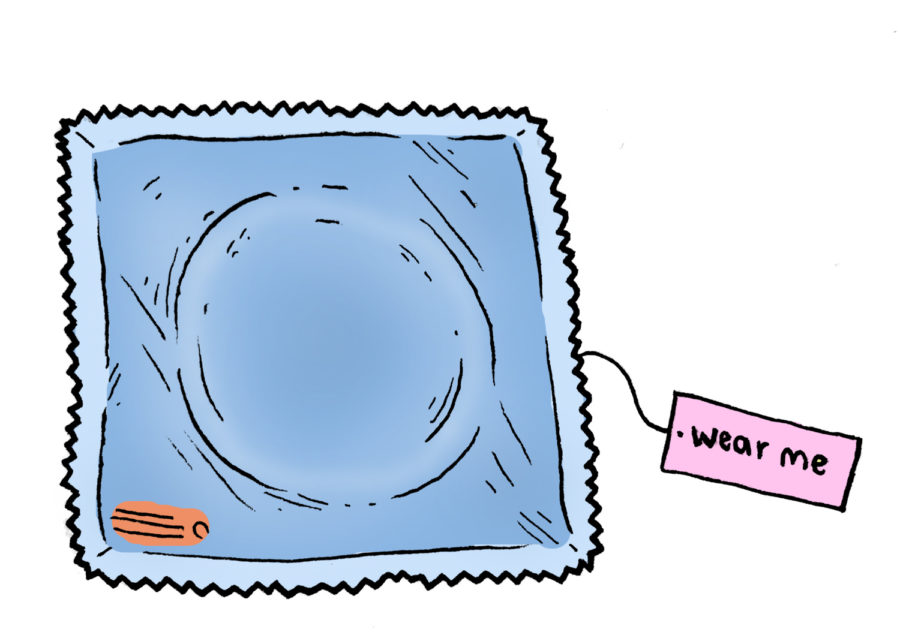Opinion | As STD rates rise, more comprehensive sex ed is needed
January 29, 2019
The status of sexual health care in the United States is in limbo. Some states require students be taught about HIV and consent, or allow individual districts to decide their own curricula when it comes to sex ed. But 26 states do not require a sex ed curriculum in public schools at all.
Of the 24 states that do mandate sex ed, only 13 have clear stipulations stating the information taught must be factually accurate. In the other 11, school districts can teach whatever they want in sex ed curriculums. The federal government currently provides financial incentive to schools that teach an abstinence-only approach, which correlates with high rates of STDs in communities. With STD cases reaching a new high of 110 million in 2017, federal law needs to stop funding ineffectual education practices in public schools for the sake of the population’s health.
Statistics gathered in 2017 by the Center for Disease Control indicate a sharp increase in cases of STDs among Americans in the past few years. 30,644 cases of syphilis — which, if left untreated, can cause severe damage to the nervous system and brain — were diagnosed in the United States in 2017. When comparing that number with 2013 data, the rate of syphilis infections increased by 76 percent.
Syphilis isn’t the only STD measured by the CDC that saw a rise in cases between 2013 and 2017. Cases of gonorrhea increased 67 percent and cases of chlamydia increased 22 percent. Certain groups, like young people aged 15 to 24, are particularly at risk. People in this age range contract half of all new STD infections.
But it’s not just young people who are seeing a rise in peers diagnosed with STDs, as people over the age of 60 are also contracting them at increasing rates. In an analysis by insurance company Athenahealth, 25 percent more Athenahealth customers age 60 and above were seen for STD treatment in 2017 compared to 2014.
This increase, too, may be a result of lack of education surrounding the use of contraception. According to Indiana University’s National Survey of Sexual Health and Behavior, adults over 40 have the lowest rate of condom use. IU suggests that this is due to lowered risk of pregnancy and that older individuals lack knowledge concerning STD contraction and prevention.
Interestingly, while the number of people with STDs is increasing, sexual activity among Americans is actually decreasing. According to statistics gathered by the General Social Survey, a sociological survey run by the University of Chicago that started in 1972, Americans are having less sex than they were 20 years ago. In fact, 22 percent of those surveyed in 2016 said they had not had sex at all in the past year — an increase from 18 percent in the mid-’90s. Data collected by one study showed that American adults in the early 2010s had nine times less sex than American adults in the early 1990s.
While rising STD rates are sometimes attributed to an increasingly promiscuous society, the data shows the opposite. Despite having less sex, rates of STDs among Americans are increasing dramatically. CDC data suggests that this is due to an increase of high-risk sexual activity, despite a decrease in sexual activity overall.
But even if people were having more sex, not teaching them how to prevent contracting STDs and promoting abstinence-only education, which does little to prevent people from initiating sex anyway, would not be the way to stop the spread of disease.
Nadine Thornhill, a Toronto-based educator and former program coordinator for Insight Theatre, an educational program for teens at Planned Parenthood, said schools play an important role in making sure the people remains educated and sexually healthy.
“Schools are really good at making sure that, as a community, kids have access to facts that they can then use to help them protect their sexual health,” Thornhill said in an interview with Canadian magazine Today’s Parent.
Of high school students surveyed in 2017, 30 percent had sex in the past three months. Of that 30 percent, nearly half didn’t use a condom the last time they had sex, which is the surest way to prevent an STD for a sexually active person.
There is proven correlation between the rates of STDs in certain areas and how comprehensive sex education is. States that mandate abstinence-only sex ed had the highest rates of STDs, compared to states with no mandate. States that stressed abstinence but did not provide it as the only form of sex ed fell between abstinence-only and no-mandate states.
Even though studies show that STD rates increase when students are taught that abstinence is the only form of prevention for STD and pregnancy rates, the government still funds abstinence-only sex ed on a federal level. Under the State Abstinence Education Grant Program, the federal government gives a financial incentive to teach abstinence-only sex education — $38.9 million was granted to states and territories to do so in 2012.
Sex education isn’t just proven to reduce rates of STDs like syphilis, gonorrhea and chlamydia — it reduces the rates of HIV infections as well. In a review of studies on HIV rates and sex ed, students who received comprehensive sex ed about HIV were more knowledgeable about HIV as a disease and how to prevent contracting it. These students were less likely to engage in high-risk sexual behavior.
It’s time for the government to step up. Instead of financially incentivizing programs that are ineffectual, federal law needs to mandate providing monetary support for comprehensive sex ed. A record number of Americans have an STD, and the only way to stop rates from increasing further is to give the coming generations the education they need to make informed, healthy choices.









